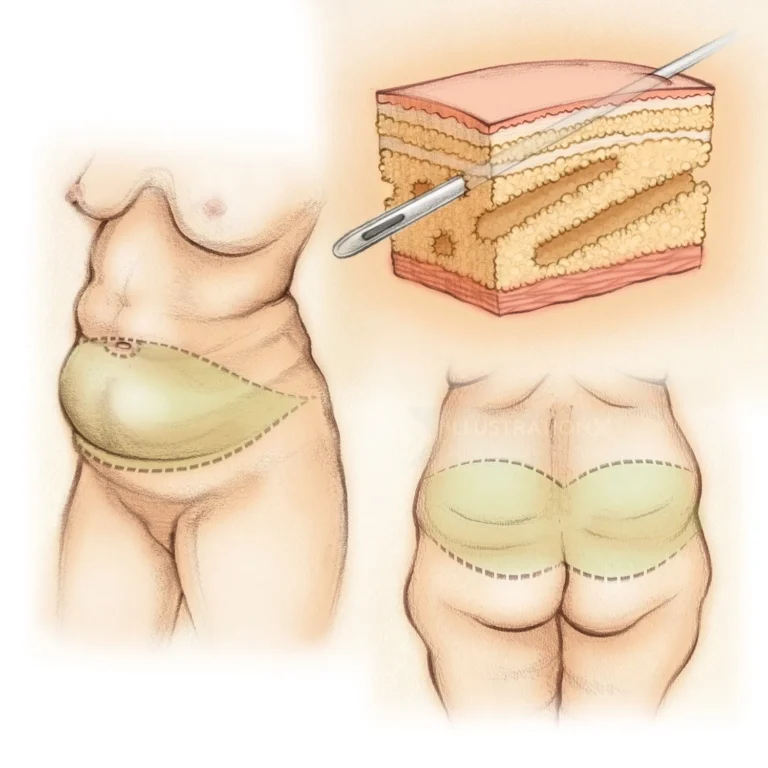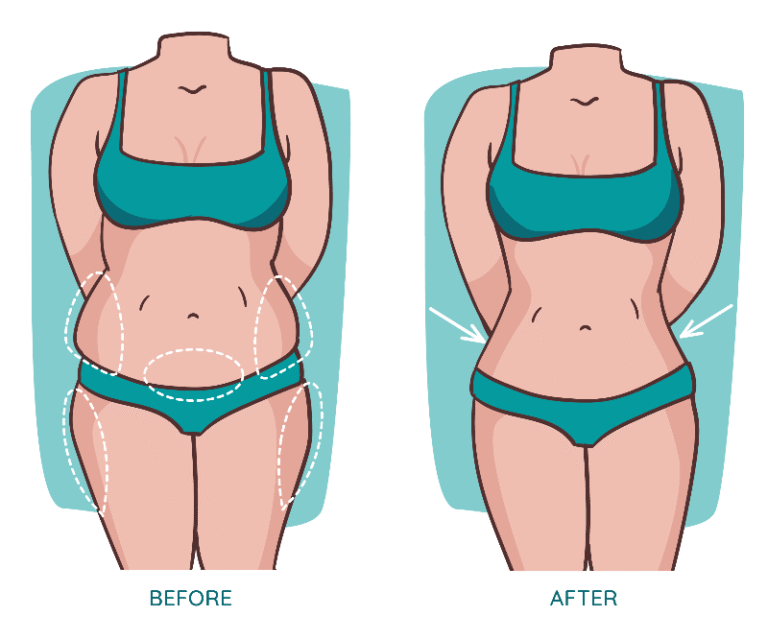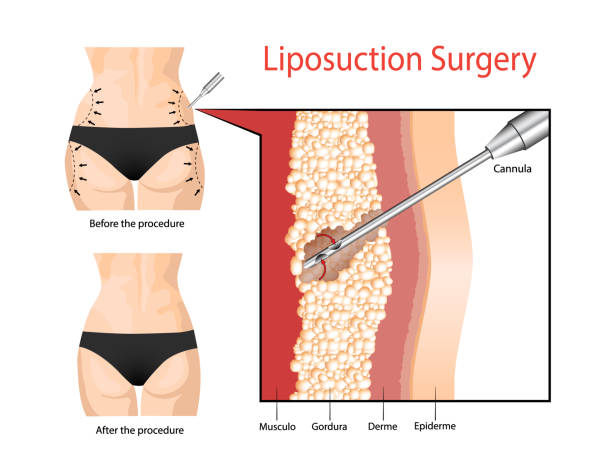Liposuction
Achieve a Slimmer, Sculpted Silhouette with Liposuction Malaysia
Say goodbye to stubborn fat with liposuction Malaysia, a proven body contouring solution for those struggling with localized fat deposits. At GLOJAS Plastic Surgery Clinic in Kuala Lumpur, our MOH-certified plastic surgeons perform advanced procedures using the latest technologies, including VASER liposuction, SmartLipo, and Power-Assisted Liposuction (PAL). This safe and effective fat removal surgery targets areas such as the abdomen, thighs, arms, and chin, delivering smoother contours and long-lasting results. Unlike weight loss methods, liposuction focuses on body sculpting by removing excess fat cells for a more defined silhouette tailored to your natural shape.
Ready to Redefine Your Shape? Book a Free Consultation Now!
What is Liposuction?
According to American Society of Plastic Surgeons, Liposuction surgery is a cosmetic surgery designed to remove excess fat from treated areas of the body. A specialized device called a cannula is inserted beneath the skin to break down and suction out fat deposits. This treatment helps reshape body contours and is ideal for people who are near their ideal weight but struggle with isolated fat pockets.
It is important to note that liposuction is not a weight-loss method. Instead, it enhances body proportion on the targeted areas resistant to lifestyle changes.
How Does Liposuction Work?
Liposuction procedure removes fat by inserting a small tube (cannula) into targeted areas to suction out fat cells. It can involve vibration, ultrasound, or laser to break down fat before removal. The procedure is done under anesthesia, and results are long-lasting with proper lifestyle maintenance.

Why Choose GLOJAS Liposuction Kuala Lumpur
Recognised by the Ministry of Health Malaysia & Award-Winning Plastic Surgery Specialist Centre
At GLOJAS Plastic Surgery Specialist Clinic in Kuala Lumpur, Malaysia, we uphold strict international surgical safety protocols to ensure every liposuction techniques is performed with the highest level of precision and patient care. Our surgical suites are ISO-certified, and we are fully licensed and accredited by the Ministry of Health Malaysia (MOH).
Our expert team is led by board-certified plastic surgeons with over 26 years of hands-on experience in both cosmetic and reconstructive surgery. All procedures are conducted by surgeons certified by ABPS (American Board of Plastic Surgery), ISAPS (International Society of Aesthetic Plastic Surgery), and MAPACS (Malaysian Association of Plastic, Aesthetic and Craniofacial Surgeons).
To date, we have proudly earned over 1,000 verified five-star reviews from satisfied patients across Malaysia, Singapore, Brunei, Indonesia, and the Middle East. Many patients travel to GLOJAS for liposuction in Kuala Lumpur based on word-of-mouth recommendations and visible results. If you’re looking for fat removal surgery near me, GLOJAS offers the ideal combination of experience, safety, and modern surgical technology. From the moment you walk in, our care team will personalize your journey—starting with consultation, through to surgery and long-term follow-up—to help you achieve your body goals confidently and safely.












Common Treatment Areas
Patients commonly seek liposuction procedure to address fat accumulation in:
Abdomen and waist
Thighs and hips
Arms and back
Buttocks
Neck and chin
Male chest (gynecomastia)
Who Can Undergo Liposuction Surgery?
Ideal candidates for the procedure are:
Adults within 30% of their ideal weight
Individuals with firm, good skin tone and elasticity
Non-smokers or those willing to quit
Those with realistic expectations
People with no serious medical conditions
The procedure is best suited for contouring, not for significant weight reduction.

Types of Liposuction Techniques
Tumescent Liposuction
Traditional liposuction method with saline + local anesthetic infusion
VASER Liposuction
Ultrasound assisted liposuction ual technology to target fat more precisely
SmartLipo (Laser-Assisted)
Laser melts fat before removal; minimal downtime
High-Definition Liposuction
Sculpting for muscular definition (abs, chest, arms)
Power-Assisted Liposuction (PAL)
Mechanized cannula for faster, smoother fat extraction
What to Expect During Fat Removal Procedure
Consultation
Before the procedure, a detailed consultation is performed to assess your health, skin elasticity, and treatment goals.
The Procedure
Under local or general anesthesia, small incisions are made to insert the cannula. Fat is then gently removed with minimal trauma to surrounding tissue.
Recovery
Patients are advised to wear compression garments, rest for a few days, and follow all aftercare instructions. Swelling and bruising are expected but temporary.
Liposuction Recovery Timeline
Recovery varies by individual, but typical timelines are:
First 3 days: Rest, manage swelling
Week 1: Light activity resumed
Weeks 2–3: Return to normal routines
Months 2–3: Final results become visible
Following your surgeon’s guidance ensures faster healing and better outcomes.


Is Liposuction Safe?
When performed by a certified surgeon, fat removal surgery is a safe and effective procedure. Still, like all surgeries, it carries some risks:
Temporary swelling or bruising
Numbness or mild discomfort
Irregular contours (rare)
Infection (very rare when sterile protocols are followed)
Safety is enhanced by proper patient selection, skilled surgical technique, and strict post-operative care.
Benefits of Liposuction
Removes stubborn fat that doesn’t respond to diet or exercise
Enhances body contours and silhouette
Boosts self-esteem and confidence
Can be combined with other cosmetic procedures
Minimal visible scarring with proper care


How Much Does Liposuction Cost in Malaysia?
The cost of liposuction surgery in Malaysia typically ranges between RM5,000 and RM32,000, depending on several key factors. These include the treatment area, liposuction technique (such as traditional, tumescent, or VASER), the surgeon’s experience, type of anesthesia, and the clinic’s reputation.
Estimated Cost In Malaysia
| Treatment Area | Estimated Price (RM) |
|---|---|
| Chin & Neck | RM 5,000 – RM 8,000 |
| Upper Arms | RM 6,000 – RM 9,000 |
| Abdomen | RM 10,000 – RM 18,000 |
| Thighs | RM 8,000 – RM 15,000 |
| Full Abdomen & Waist | RM 20,000 – RM 30,000 |
| Back or Bra Line | RM 20,000 – RM 30,000 |
| 360 Lipo (Multiple Areas) | RM 25,000 – RM 32,000 |
Our Client Testimonials
Liposuction results before and after
I had stubborn belly fat for years. After a tummy sculpting procedure in Malaysia with Dr. Muya, my waistline is finally defined. Best decision ever.
I did fat contouring for my love handles with Dr. Ali. He explained everything and the recovery was smooth.
My thighs bothered me. Dr. Muya's body shaping treatment was precise. I now wear shorts confidently!
Always struggled with back fat. The KL body contouring by Dr. Ali was very effective and worth it.
I chose GLOJAS after research. Dr. Muya sculpted my tummy with natural-looking results.
Did a male chest reshaping (gynecomastia) with Dr. Ali. Results were exactly what I wanted.
Had arm fat removal. Dr. Muya and team made it easy and comfortable. Fast recovery too.
Searched for “body contouring near me”. Dr. Ali delivered high-definition sculpting. Very satisfied.
Post-pregnancy tummy was tough. Dr. Muya helped me feel like myself again. Thank you!
My waist has never looked this defined. Dr. Ali’s sculpting skills are unmatched.
Meet Our Team & Specialist Doctors
At GLOJAS Plastic Surgery Specialist Clinic, all procedures are performed by MOH-certified surgeons, ensuring safety and results. We use advanced techniques like VASER and PAL to deliver precise fat removal and natural body contouring, following strict Ministry of Health Malaysia (MOH) standards.

Dr. Muya
Board-Certified Plastic Surgeon
Dr. Mohd Ali
Board-Certified Plastic Surgeon
Dr. Akmal
Board-Certified Plastic Surgeon
Frequently Asked Questions
Ready to Redefine Your Shape? Book a Free Consultation Now!
GLOJAS Plastic Surgery Specialist Clinic in Kuala Lumpur delivers confidence and natural beauty with expert hair transplant, plastic surgery, and advanced aesthetic treatments—personalized for you.

